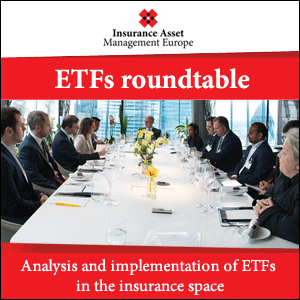
LATEST NEWS
- Around 1 in 4 US institutional asset owners expect to use an OCIO over next 24 months
- UK life insurance sector resilient to IST 2022 despite SCR coverage falling to 123%
- Sustainability considerations a factor for nine-out-of-ten real assets investors
- Baloise issues CHF 175m senior green bond
- Dutch insurers reduce absolute carbon footprint of equity portfolios by 40%
UK life insurance sector resilient to IST 2022 despite SCR coverage falling to 123%

Written by Adam Cadle
23/01/2023
The UK’s life insurance sector’s solvency capital requirement (SCR) coverage fell from 162% to 123% under the PRA’s Insurance Stress Test 2022 (IST 2022), with the general insurance sector’s SCR coverage remaining above 120% in all scenarios.
Fifty-four insurers took part in the IST 2022 (16 life insurers, 17 general insurers, and 21 Lloyd’s syndicates). The PRA market shock scenario is a severe stress reducing the participating life firms’ aggregate capital surplus above the regulatory capital requirements from £34.2bn to £18.4bn (solvency cover reduction of 28 percentage points) through to Stage 3, during which firms were allowed to apply permitted management actions. In Stage 4, the longevity stress further reduces this surplus to £12.3bn (a further solvency cover reduction of 12 percentage points), after allowing for the benefit of existing reinsurance arrangements and, for some firms, further management actions.
The PRA said that despite the major life firms' solvency being resilient to the financial market shocks set out by the regulator, and none of the entities breaching its MCR, the main drivers of the change in the SCR coverage ratio at an aggregate level were equities stress, interest rate stress, spread widening stress, downgrades 30% 1 Credit Quality Step (CQS) stress, property stresses, management actions up to Stage 3, and longevity stress.
In total, four firms saw their solvency coverage reduced to red solvency risk appetite or lower, with one entity breaching 100% SCR coverage at Stage 3. Following the additional longevity shock at Stage 4, five firms are within or beneath their red risk appetite for solvency coverage, with two of them breaching 100% SCR coverage. The PRA said those entities would need to rely on material actions that were not permitted to be recognised as part of this exercise, including injections of capital to restore their coverage ratios to their target capital risk appetite.
The PRA issued a warning around several firms relying on the ability to sell liquid ‘BBB’ rated assets following their downgrade to sub-investment grade and reinvesting the proceeds in investment grade assets in response to the stress.
“Overall, during the scenario, between £8bn and £9bn of liquid sub-investment grade assets were assumed to be sold by life insurers,” it said. “Most participants assumed in Stage 3 that they would be able to sell sub-investment grade assets within 6 to 12 months following the stress. In light of the aggregate finding, this could be optimistic, especially as other investors would also be taking similar actions. It is important that, when firms plan for the management actions that they could take in stress, they allow for market liquidity and potential stress amplification arising from actions taken by other investors. The market liquidity and stress amplification will change with the level of market stresses.”










